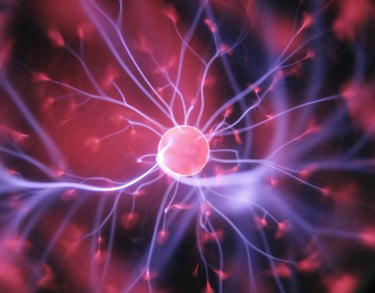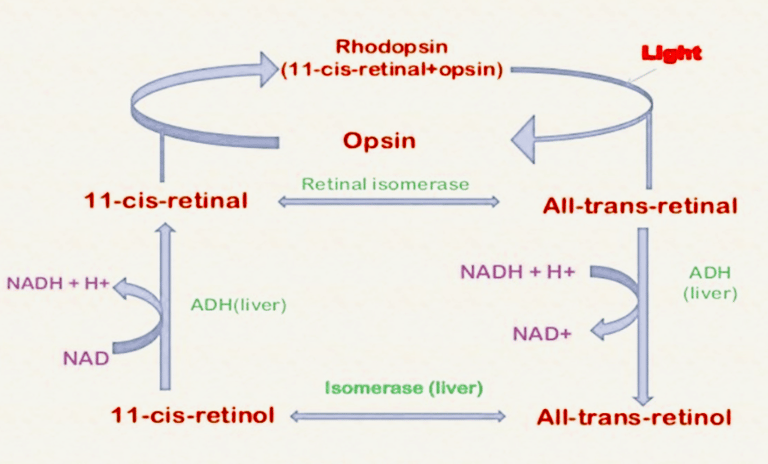Electron Transport Chain
The Visual Cycle: A Journey Through Your Eyes The visual cycle is a fascinating process that allows us to see the world around us. It involves a series of biochemical reactions in the retina, the light-sensitive layer at the back of our eyes. Let’s take a simple and unique journey through this cycle to understand how it works.
RESPIRATIONBIOLOGICAL OXIDATION
8/22/20242 min read


The Visual Cycle: A Journey Through Your Eyes
The visual cycle is a fascinating process that allows us to see the world around us. It involves a series of biochemical reactions in the retina, the light-sensitive layer at the back of our eyes. Let’s take a simple and unique journey through this cycle to understand how it works.
The Players in the Visual Cycle
Photoreceptors: These are the cells in the retina that detect light. There are two main types: rods (for low-light vision) and cones (for color vision).
Opsins: These are proteins in photoreceptors that react to light.
Retinal: A form of vitamin A that changes shape when it absorbs light.
When light enters the eye, it hits the retina and interacts with the photoreceptors. Here’s a step-by-step look at what happens next:
Light Absorption: Light photons hit the opsins in the photoreceptors. Each opsin is bound to a molecule of 11-cis-retinal.
Shape Change: The 11-cis-retinal absorbs the light and changes shape to become all-trans-retinal. This change triggers a series of reactions inside the photoreceptor.
Signal Transmission: The shape change in retinal activates the opsin, which then starts a cascade of biochemical reactions. These reactions generate an electrical signal that travels through the optic nerve to the brain, where it is interpreted as vision.
Recycling Retinal
For the photoreceptors to continue detecting light, the all-trans-retinal must be converted back to 11-cis-retinal. This recycling process happens in the retinal pigment epithelium (RPE), a layer of cells next to the photoreceptors.
Transport: All trans-retinal is transported from the photoreceptors to the RPE.
Conversion: In the RPE, enzymes convert all-trans-retinal back to 11-cis-retinal.
Return: The 11-cis-retinal is transported back to the photoreceptors, ready to start the cycle again.
Why It Matters
The visual cycle is crucial for maintaining our vision. Any disruption in this cycle can lead to vision problems. For example, a deficiency in vitamin A can impair the production of retinal, leading to night blindness.
Conclusion
Understanding the visual cycle helps us appreciate the complexity and efficiency of our eyes. This cycle is a perfect example of how our body uses biochemistry to perform essential functions. So, next time you marvel at a beautiful sunset or read a book, remember the incredible journey happening in your eyes to make it all possible.


BLOG
Join us to explore medical biochemistry intricacies.
WRITE TO US
© 2024. All rights reserved.
